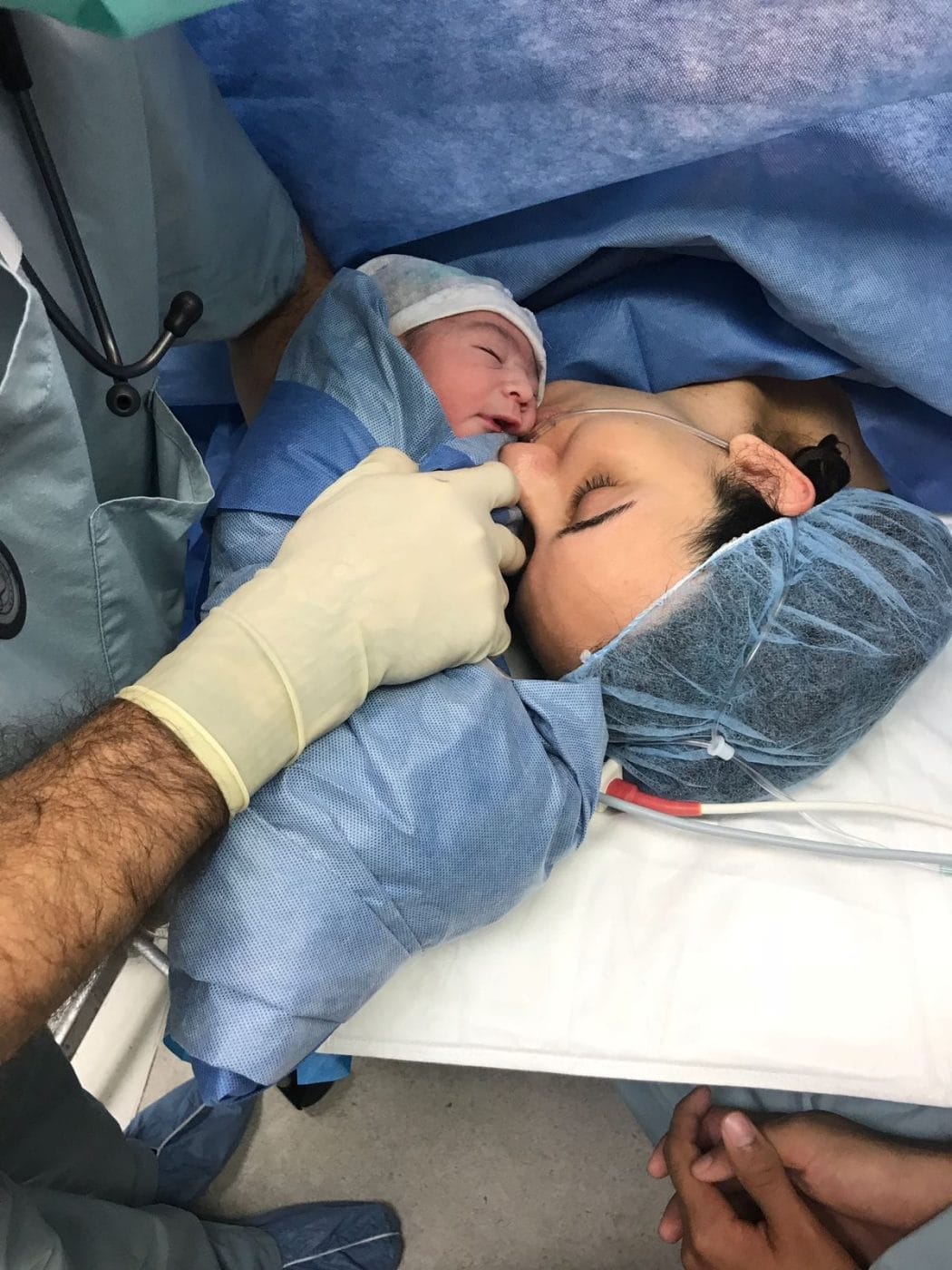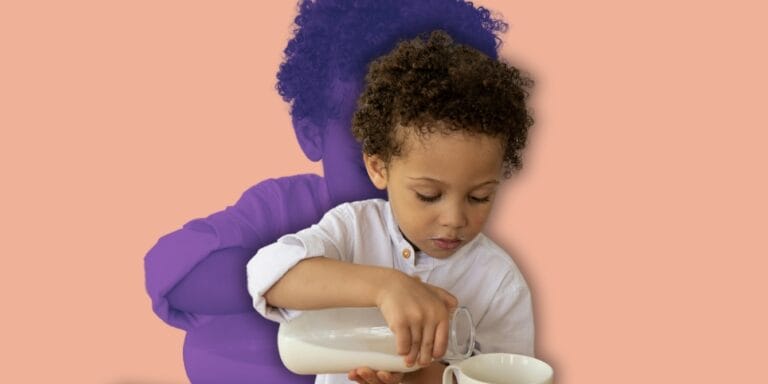96% of pregnant people still planning hospital births despite pandemic

"I considered the home birth for a second, but then realized that would be nearly impossible with my circumstances," Sarah tells Motherly.
The pandemic changed the way labor and delivery units operate, and many speculated this would discourage pregnant people from giving birth in hospitals. Recently, multiple news reports speculated that based on an increased number of calls to midwives and birthing centers, more pregnant people would be choosing out of hospital births, but millennial mothers are telling us exactly the opposite.
Our third annual State of Motherhood survey finds 96% of pregnant millennial mothers still plan to give birth in a hospital, not at home, despite concerns about COVID-19.
The confidence in the hospital birth experience may come as a shock after weeks of headlines declaring that calls to midwives are way up, and as celebrity mama
Bekah Martinez plans her home birth out loud on Instagram, but for many mothers, the hospital is still where they plan to meet their child.
Sarah A. is one of those mothers. Like 77% of the mothers in our survey, Sarah already had an older child at home when she had to decide whether to give birth in the hospital or at her home in Miami, Florida. As she neared her due date in early May, Sarah carefully weighed the options as the pandemic forced many maternity wards to implement restrictions on visitors and stories of pregnant people contracting the virus made the news.
“I considered the home birth for a second, but then realized that would be nearly impossible with my circumstances,” Sarah tells Motherly.
Like more than a third of American mothers, Sarah has had a C-section. It happened 10 years ago, when she welcomed her daughter.
“Even though I have no complications of pregnancy, I already had a previous C-section and should not risk it by doing a home birth,” Sarah tells Motherly. “I have confidence that the doctors, nurses and staff in the hospital are and will do everything they can to help.”
The American Congress of Obstetricians and Gynecologists agrees with Sarah here.
ACOG has stated that “attempting a vaginal birth after Cesarean at home is especially dangerous because if the uterus ruptures during labor, both the mother and baby face an emergency situation with potentially catastrophic consequences, including death. Unless a woman is in a hospital, an accredited freestanding birthing center, or a birthing center within a hospital complex, with physicians ready to intervene quickly if necessary, she puts herself and her baby’s health and life at unnecessary risk.”
Vaginal births after a Cesarean section (VBACs) are possible for many pregnant people, but many health care providers suggest that VBACs happen in hospitals to prevent having to transport a laboring mother to the hospital if the worst-case scenario should occur.
Diana Spalding is a certified nurse-midwife and the founder of Gathered Birth. She is also Motherly’s Digital Education Editor and wrote the book, The Motherly Guide to Becoming Mama.
“Home births are a wonderful option for women with low-risk pregnancies, who want to have low intervention births in the comfort of their own home,” says Spalding. “ACOG [the American College of Obstetricians and Gynecologists] states that while they believe hospitals and in-hospital birthing centers to be the safest place to have a baby, women should be supported when they choose home birth in the presence of [a qualified midwife]. If you are considering a home birth, a bit of research is involved. Reach out to local home birth midwives to have in-depth conversations about your specific scenario. And don’t forget to contact your insurance company—it’s not always covered.”
For Sarah, the higher risk factors in her pregnancy meant it just wasn’t a fit. The idea of having to get EMTs and ER staff involved in her delivery seemed riskier than just delivering in the hospital in the first place.
“I did not want to go to an emergency room to potentially be close to patients that might have COVID-19. We are lucky that the hospital is well prepared,” she tells Motherly. “The Friday before my delivery, my husband and I were tested for COVID-19 to minimize exposure, and I am fortunate enough to have him there with me the whole hospital stay.”
Because C-section rates are so high in the U.S., it makes sense that so many of our surveyed mothers are not seeking a home birth for reasons similar to Sarah’s, but home birth is still attractive to some mothers.
Reality TV star turned influencer Becka Martinez has been very open about her first birth experience, which happened in a birthing center, and now, 16 months after welcoming her first daughter, she’s planning her pandemic home birth.
“With my first daughter Ruth, we had her at a birth center,” she explained on Us Weekly’s “Here for the Right Reasons” podcast. “This time, [my boyfriend, Grayston Leonard, and I] decided we were going to do a home birth with midwives. So that was already the plan. Now with quarantine and COVID-19, it’s kind of nice that I don’t have to be at the hospital.”
For Martinez, a home birth makes perfect sense for her low-risk pregnancy. She’s technically full-term now, which means that her home birth is likely happening very soon, and we’re excited for her and hope she has a beautiful experience.
But a hospital birth can be beautiful, too, as Sarah A. found out. We caught up with her after her hospital birth in Miami to find out how she was feeling about giving birth during a pandemic. She says everything went smoothly and she is recovering from the C-section nicely.
Her advice for fellow pregnant people is simple: “If you have the luxury of a comfortable home birth with experts and your family during these times, that is great. However, those who are unable to have a home birth should still feel confident in the staff of the hospitals. It is scary not having your significant other or any visitors allowed while giving birth, but each person must do what’s right for their families. Bringing a life to this world is still a celebration even in times of COVID-19.”


































